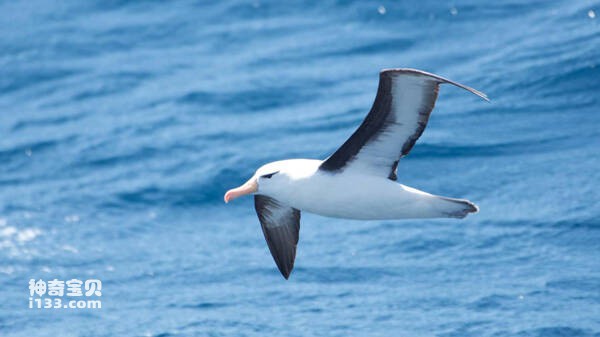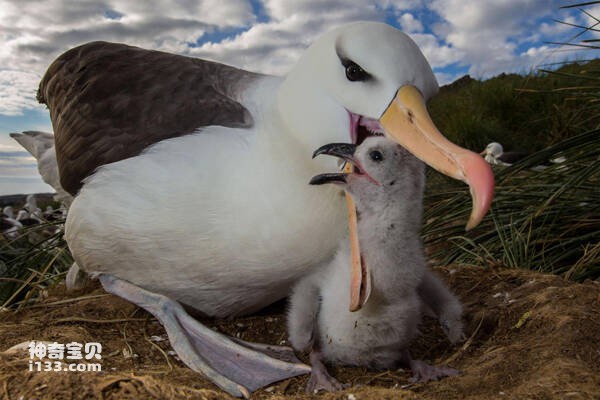Thalassarche melanophrys
IUCN
LCBasic Information
Scientific classification
- name:Thalassarche melanophrys
- Scientific Name:Thalassarche melanophrys,Black-browed Albatross
- Outline:Waterfowl
- Family:
Vital signs
- length:80-95CM
- Weight:2.9-4.7kg
- lifetime:70 years or so
Feature
The eyebrows are black, the beak is yellow-orange, and the tip is red-orange
Distribution and Habitat
After migrating from the Falkland Islands to South Africa for the winter, black-browed albatrosses and their mates reunite in nests they previously occupied.
The black-browed albatross is found in the ocean surrounding Antarctica and breeds on 12 islands. In the Atlantic, they are found in the Falkland Islands, the Diego Ramirez Islands, and South Georgia. In the Pacific, they are found on Campbell Island, Antipodes Islands, Snells Islands, and Macquarie Island. In the Indian Ocean, they are found on the Crozet Islands, Kerguelen Islands, Heard Island and MacDonald Islands.
Appearance
The black-browed albatross is medium sized, about 80 to 95 cm long, with a wingspan of 2 to 2.4 m, and an average weight of 2.9 to 4.7 kg. They can live for more than 70 years. The wings and back are bright pink, while the belly and rump are orange. The underside of the wings is predominantly white with irregular black edges. The eyebrows are black, the beak is yellow-orange, and the tip is red-orange.
The nestlings have a deep beak, grey head and neck, and dark underwing.
Details
The black-browed albatross (Thalassarche melanophrys) is one of the most widespread and widespread species of albatross with dark eyes behind its eyes, hence the name "black-browed". The black-browed albatross was first described by Conrad Jacob Temink in 1828, based on specimens found at the Cape of Good Hope, and was classified in the genus Albatross.

The black-browed albatross community is very noisy and often vocalises to mark its territory. They use their tails to show love. Black-browed albatrosses nest on grassy steep slopes or cliffs. On the Falklands, however, they nest in lawns on the shore. They only give birth once a year, between September and November, and only lay one egg at a time. Both parents assist in incubation, which takes about 68 to 71 days. The chicks moult 120 to 130 days after birth. Young birds return to the colony at 2-3 years of age to show love, and can breed at 10 years of age.

The International Union for Conservation of Nature (IUCN) lists the black-browed albatross as endangered based on a significant decline in its population. On Bird Island near South Georgia, the number of breeding pairs decreased by 4% per year, and on the Kerguelen Islands, the number declined by 17% between 1979 and 1995. In the Diego Ramirez Islands, the population has been declining since the 1980s, but in the Falkland Islands, the population has increased since the 1980s, probably due to large quantities of fishing discards. Their numbers have plummeted by 67% in 64 years.
Increased use of longline fishing in the southern Ocean is the main cause of the decline in the black-browed albatross population. In fact, the black-browed albatross is the most vulnerable to being killed by the fishing industry. Trawling has also reduced the black-browed albatross population, particularly in Patagonian and near South Africa. The black-browed albatross is protected under the Bonn Convention and the Convention on the Conservation of Albatrosses and Petrels, its population is monitored and its breeding grounds are protected. Heard Island, MacDonald Islands, Macquarie Island and New Zealand are all protected as World Heritage Sites.
Protect wild animals and eliminate wild meat.
Maintaining ecological balance is everyone's responsibility!








